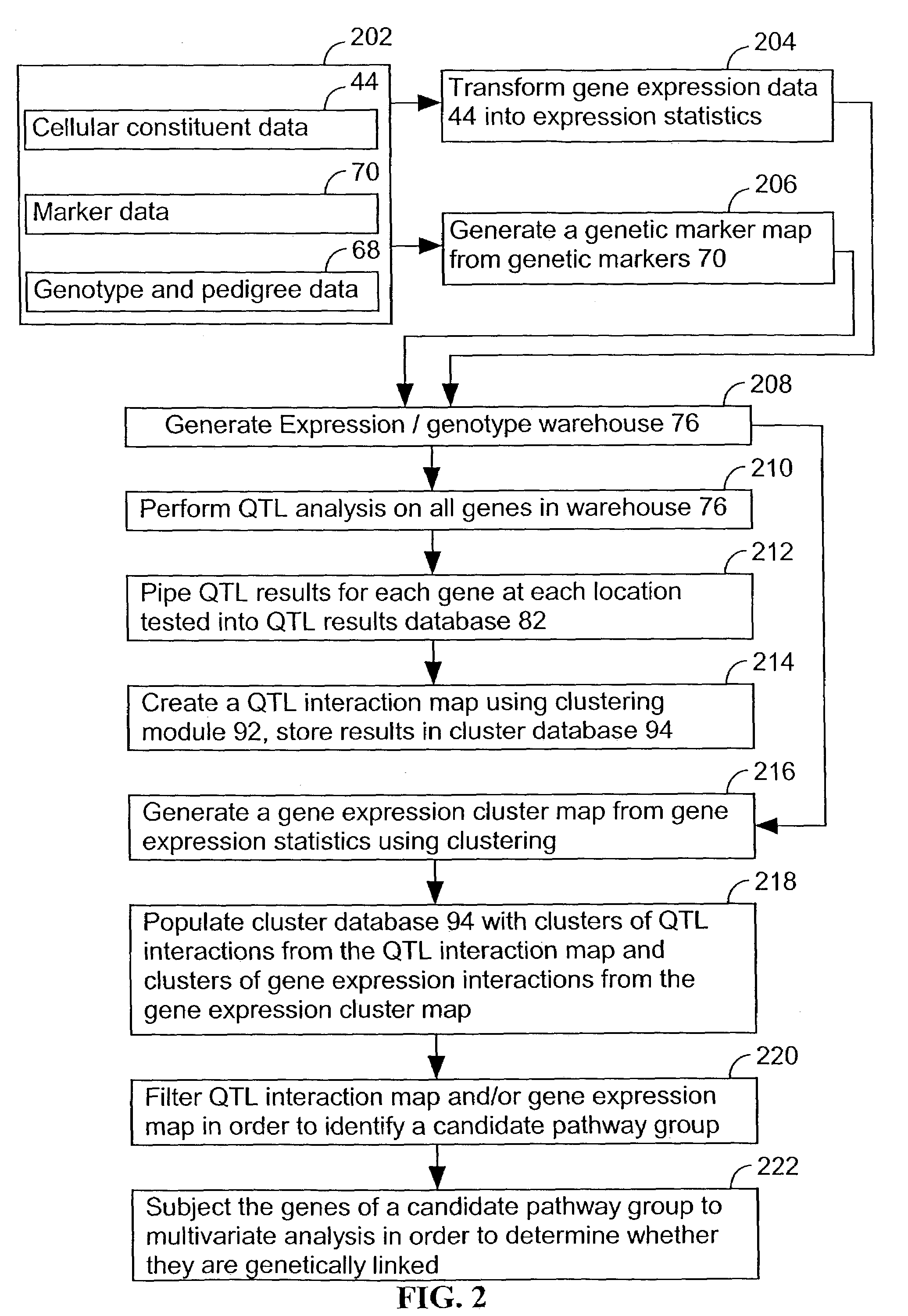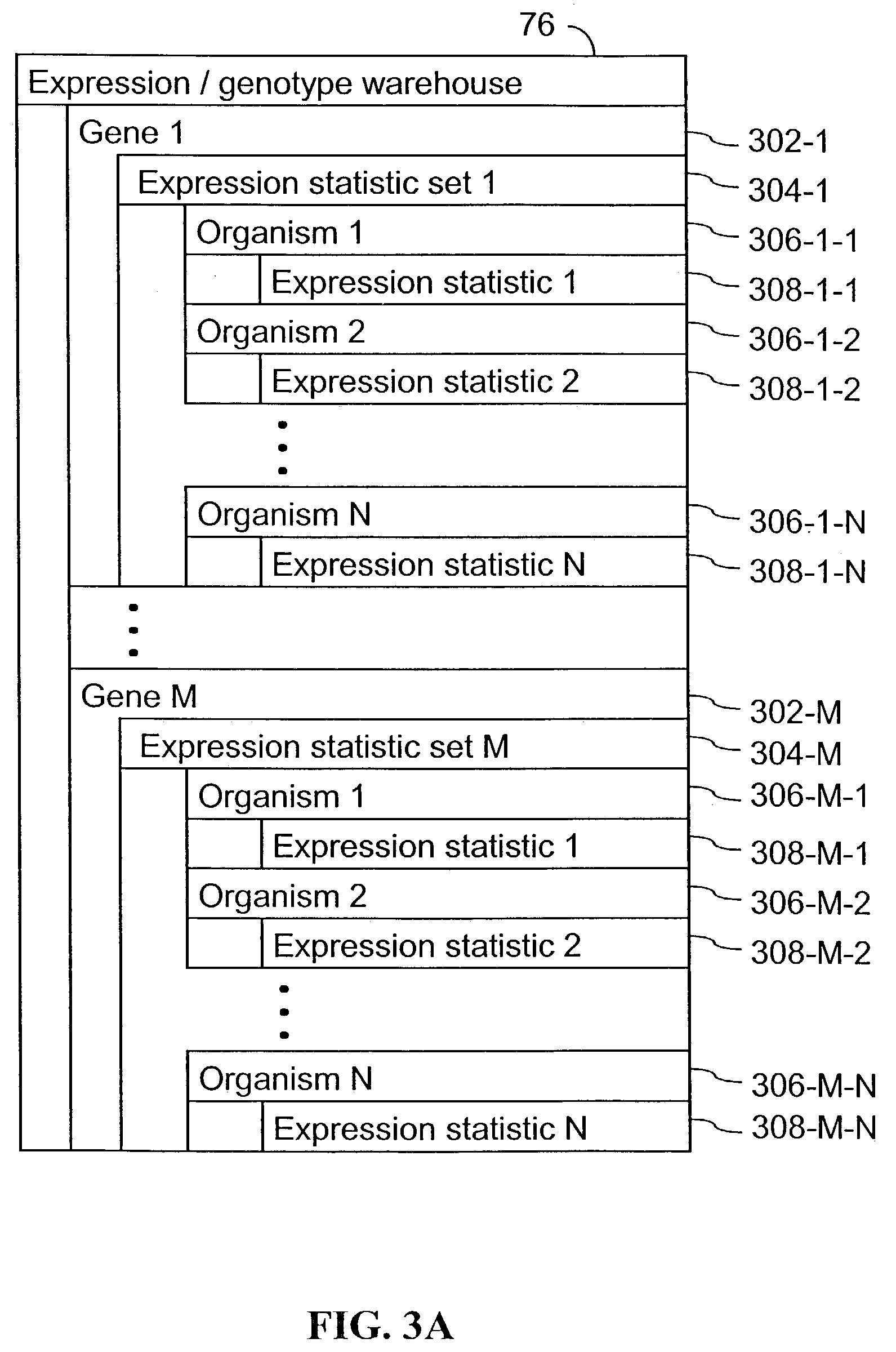Computer systems and methods for identifying genes and determining pathways associated with traits
a computer system and gene technology, applied in the field of computer systems and methods for identifying genes and biological pathways associated with complex traits, can solve problems such as problems such as failure to achieve the goal of elucidating genes involved in biological, disease, and using either gene expression or genetic expression approaches, and achieves the effect of avoiding false positives, avoiding false positives, and avoiding false positives
- Summary
- Abstract
- Description
- Claims
- Application Information
AI Technical Summary
Benefits of technology
Problems solved by technology
Method used
Image
Examples
Embodiment Construction
[0063]The present invention provides an apparatus and method for associating a gene with a trait exhibited by one or more organisms in a plurality of organisms of a species.
[0064]Exemplary organisms include, but are not limited to, plants and animals. In specific embodiments, exemplary organisms include, but are not limited to plants such as corn, beans, rice, tobacco, potatoes, tomatoes, cucumbers, apple trees, orange trees, cabbage, lettuce, and wheat. In specific embodiments, exemplary organisms include, but are not limited to animals such as mammals, primates, humans, mice, rats, dogs, cats, chickens, horses, cows, pigs, and monkeys. In yet other specific embodiments, organisms include, but are not limited to, Drosophila, yeast, viruses, and C. elegans. In some instances, the gene is associated with the trait by identifying a biological pathway in which the gene product participates. In some embodiments of the present invention, the trait of interest is a complex trait such as a...
PUM
| Property | Measurement | Unit |
|---|---|---|
| hybridization time | aaaaa | aaaaa |
| volumes | aaaaa | aaaaa |
| volumes | aaaaa | aaaaa |
Abstract
Description
Claims
Application Information
 Login to View More
Login to View More - R&D
- Intellectual Property
- Life Sciences
- Materials
- Tech Scout
- Unparalleled Data Quality
- Higher Quality Content
- 60% Fewer Hallucinations
Browse by: Latest US Patents, China's latest patents, Technical Efficacy Thesaurus, Application Domain, Technology Topic, Popular Technical Reports.
© 2025 PatSnap. All rights reserved.Legal|Privacy policy|Modern Slavery Act Transparency Statement|Sitemap|About US| Contact US: help@patsnap.com



